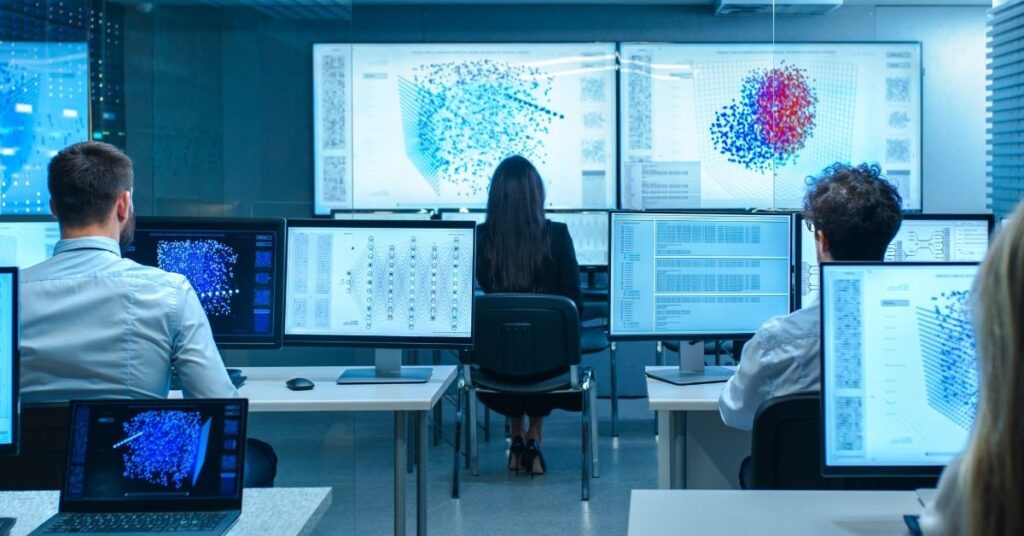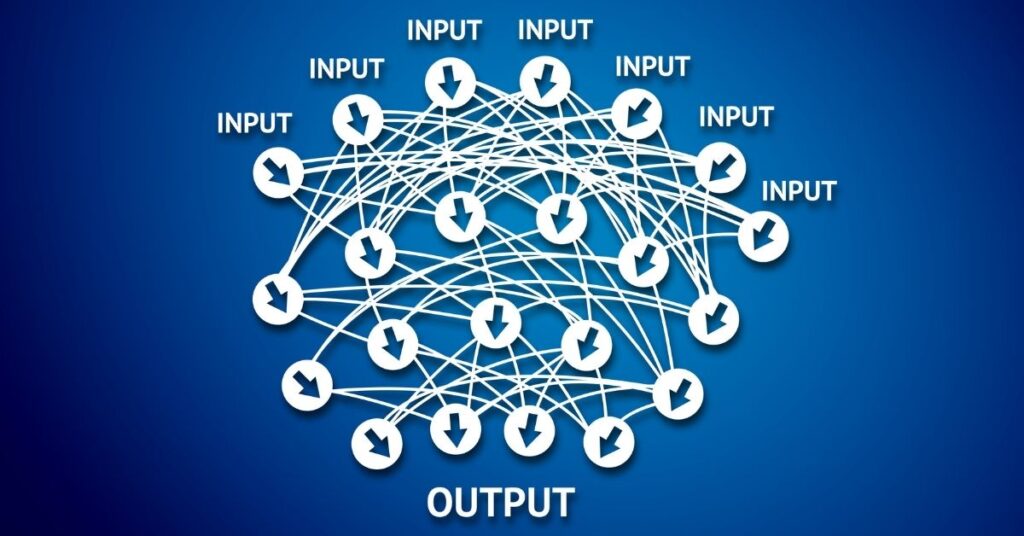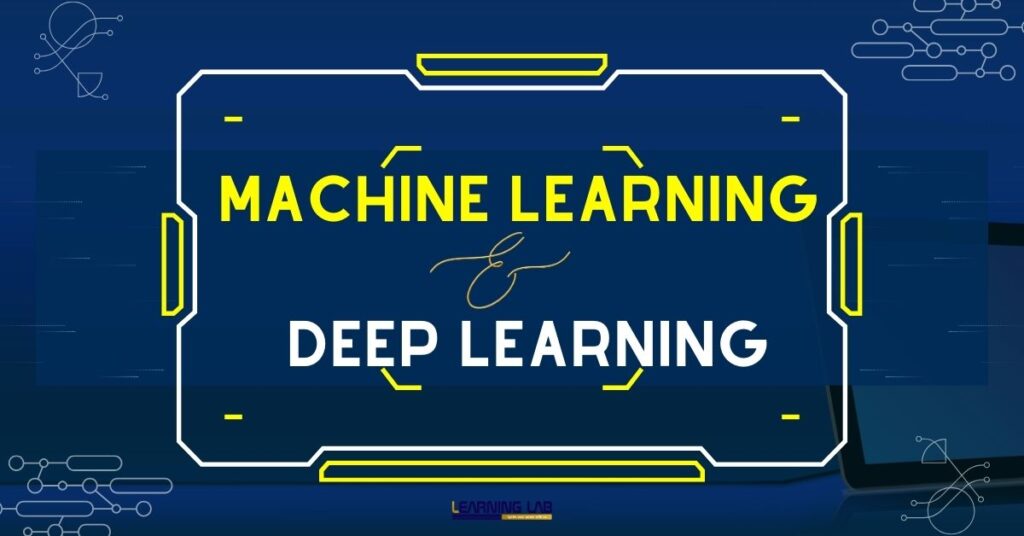Difference Between ML And Deep Learning: Artificial Intelligence (AI) is everywhere today—from voice assistants like Alexa and Siri to Netflix recommending your next binge-worthy show.
Two of the most common technologies powering these innovations are machine learning (ML) and deep learning. But wait—aren’t they the same thing? Well, not quite! While both belong to the AI family, there are some significant differences that set them apart.
By the time you finish this article, you’ll not only know how these technologies differ but also gain clarity about their applications, advantages, and limitations.
What is Machine Learning?
At its core, machine learning is a subset of artificial intelligence (AI) that enables computers to learn from data and make predictions or decisions without being explicitly programmed. Sounds cool, right? Instead of writing specific instructions, we train ML models to perform tasks by exposing them to large datasets.
How Does Machine Learning Work?
Here is a simple explanation on how ML works:
- Data Collection: Large amounts of data are gathered for training purposes.
- Feature Extraction: Relevant features (or patterns) are identified within the data.
- Model Training: The model is trained using algorithms like decision trees, linear regression, or support vector machines.
- Prediction & Improvement: Once trained, the model makes predictions, and over time, it improves its accuracy.
For example, think about Netflix recommending movies to you. That’s machine learning at play—it analyses your viewing history and preferences to suggest content you’ll likely enjoy!

Continue reading to learn about difference between ml and deep learning.
What is Deep Learning?
Deep learning, on the other hand, is a more advanced and specialized subset of machine learning. It mimics the way the human brain works by using artificial neural networks to process information. It’s particularly useful when working with massive datasets like images, audio, or videos.
How Deep Learning Works
Here’s a simple way to understand deep learning:
- Imagine layers of interconnected neurons (just like our brain).
- Each layer processes information and passes it to the next layer for further analysis.
- With enough layers (hence the term “deep”), the network can understand complex data patterns, like identifying faces in photos or translating languages.
Take Google Translate, for example. It uses deep learning algorithms to understand the context and meaning of sentences, not just word-for-word translation.
Key Difference Between ML and Deep Learning
Now, let’s get to the heart of the matter—what is the difference between ML and deep learning?
| Features | Machine Learning (ML) | Deep Learning |
| Definition | Subset of AI where systems learn from data | Subset of ML that uses neural networks |
| Data Dependency | Works well with small to medium datasets | Requires large datasets for effective learning |
| Hardware Needs | Can work on standard computers | Requires GPUs or TPUs for high computation |
| Feature Engineering | Manual feature extraction is necessary | Automatically extracts features from data |
| Applications | Predictive analytics, fraud detection | Image recognition, natural language processing |
The primary difference between ML and deep learning lies in how they approach problem-solving. While machine learning relies on structured datasets and manual intervention, deep learning automates much of the process, making it ideal for complex problems.
Advantages and Disadvantages of Deep Learning and Machine Learning
No technology is perfect! Let’s explore the machine learning advantages and disadvantages as well as the advantages and disadvantages of deep learning:
Advantages of Machine Learning
- Works well with smaller datasets.
- Easy to interpret and debug results.
- Requires less computational power compared to deep learning.
Disadvantages of Machine Learning
- Manual feature engineering is time-consuming.
- Limited performance with unstructured data like images or videos.
READ MORE: Advantages And Disadvantages Of Machine Learning: Why It Matters!
Advantages of Deep Learning
- Can handle massive datasets and unstructured data effectively.
- Eliminates the need for manual feature extraction.
- Achieves state-of-the-art accuracy in fields like computer vision and speech recognition.
Disadvantages of Deep Learning
- Requires huge amounts of data for training.
- High computational cost due to the need for GPUs/TPUs.
- Difficult to interpret or explain the model’s decisions (commonly called the “black box” problem).
Applications: Where Do ML and Deep Learning Shine?
Both ML and deep learning have revolutionized industries worldwide. Let’s look at some common applications:
Applications of Machine Learning
- Fraud detection in banking and finance.
- Predictive maintenance in manufacturing.
- Personalized marketing (e.g., Amazon’s product recommendations).
Applications of Deep Learning
- Autonomous vehicles (e.g., Tesla).
- Medical imaging for disease diagnosis.
- Voice assistants like Alexa and Siri.
In short, machine learning shines in tasks with structured data and simpler problems, while deep learning dominates when tackling complex, unstructured data.

How Can You Learn ML and Deep Learning?
Learning these technologies doesn’t have to be overwhelming! At Ze Learning Labb, we offer beginner-friendly and advanced courses to help you master these in-demand skills. Whether you’re curious about how deep learning works or how machine learning works, our hands-on projects and expert guidance make learning fun and practical.
- Machine Learning Mastery: Learn to build predictive models, handle datasets, and optimize algorithms.
- Deep Learning Bootcamp: Dive deep into neural networks, TensorFlow, and PyTorch.
👉 Explore Ze Learning Labb Courses Here
Why Should You Care About ML and Deep Learning?
Here’s a food for thought: “Machine learning is transforming how we interact with technology, but deep learning is taking it a step further—making technology more ‘human-like’ than ever.”
From revolutionizing medicine to enabling self-driving cars, these technologies are here to stay. So, understanding the difference between ML and deep learning isn’t just useful—it’s essential for anyone looking to stay ahead in today’s world.
On A Final Note…
So, what is the difference between ml and deep learning? While ML focuses on simpler tasks with smaller datasets, deep learning takes it up a notch by tackling complex, data-heavy problems with its neural networks.
If you’re eager to explore this exciting field, check out Ze Learning Labb’s courses and start your journey today. Remember, the future is all about embracing change—and these technologies are leading the charge!





